
The Thermaltake Ceres 500 TG ARGB Snow is a showcase midi tower that was unveiled at this year’s Consumer Electronics Show (CES). It offers exciting features like four pre-installed 140mm ARGB fans as well as the possibility of a vertical GPU installation. On top of that, the manufacturer gives us the option to implement the manufacturer’s own 3.9-inch LCD display, which shows additional information on the left side. 60% of the panels are also perforated, which should make the new case a consistently airy midi tower. A lot of space comes with the Thermaltake Ceres 500 TG ARGB, so that even graphics cards up to 425 mm can be accommodated.
After the smaller brother, the Thermaltake Ceres 300 TG ARGB in review, could already convince us, so we check the full expansion of the Ceres series today. In this review, we will take a look together at how the case performs in practice and whether it can live up to its current € 139.90 * price. Furthermore, we also catch a glimpse of the optional LCD panel kit, which can be purchased separately for a price of € 119.90 *.
Case technical specifications
| Model | Ceres 500 TG ARGB (Snow) |
| Case shape | Midi Tower |
| Material | SPCC, tempered glass |
| Color | Black, White |
| Dimensions | 525 x 245 x 507.7 mm (H x W x D) |
| Weight | 10.5 kg |
| Form factor motherboards | Mini-ITX, Micro ATX, ATX, E-ATX |
| Form Factor Power Supply | ATX |
| I/O Ports |
|
| Drive options |
|
| Radiator |
|
| Fan |
|
| Factory fans |
|
| Max. Height of the CPU cooler | 185 mm |
| Max. Length of the power supply | 220 mm |
| Max. Length of the graphics card |
|
| Price | € 139.90 * |


Scope of delivery
- Case including four full-sized ARGB fans
- Numerous accessories such as cable ties as well as a motherboard buzzer
The Thermaltake Ceres 500 TG ARGB’s box is fairly plain, but reveals the package contents. On the front, side as well as the back, the case is pictured on the brown cardboard box. Additionally, it is apparent at first glance that this model comes with four full-sized ARGB fans. One side of the box tabulates the technical specifications of the Ceres 500 TG ARGB.
If we now look at the scope of delivery, this includes the case itself on the one hand, which is encased in styrofoam on both sides. In our test, this is the snow-white design, which Thermaltake markets in the “Snow” variant. All mounting accessories are included fixed in a brown box in the Ceres 500 TG ARGB. Besides a set of screws of various types, cable ties and an optional buzzer for connecting to the motherboard also come out here. The assembly instructions are also naturally assigned to this item and contain a full German passage.
Exterior impression
- Interesting color gradient with the black/snow white look
- Radiator in the front up to 420mm possible
- Over 60% of the panels are perforated for better airflow
At first glance, the numerous similarities to its smaller brother, the Ceres 300 TG ARGB, reveal themselves. Thereby, it looks visually in the picture comparison almost identical, although the space in the Thermaltake Ceres 500 TG ARGB turns out to be a lot larger. Furthermore, the manufacturer has now also installed all factory fans as ARGB and the front can now accommodate three 140 mm fans instead of just two. If you are inclined to install a radiator at the front, there are no limits up to 420 mm.
From our point of view, the mixture of the snow-white design in combination with the dark front skirt is successful. This color gradient runs through the entire case, which conveys a modern but also timeless design. The 3 millimeter tempered glass window on the left side reveals a view of the case’s interior to us. We can open the glass window sideways with its own catch, which is also held in shape by two stable hinges. If we turn the case around its own axis, we notice that the Ceres 500 TG ARGB is completely designed for airflow on each side. This is also due to the fact that over 60% of the panels are perforated.
The front I/O panel is located on the left side and provides us with all the necessary connections when we need to be quick. In addition to the power and reset buttons, as well as two LEDs for power and HDD status, we also have a USB-C 3.2 port, two USB 3.0 ports and two jack ports at our disposal.
Interior impression
- Power supply accessible from both sides of the case
- GPU mount included, which can be adjusted for height
- Easy cable management possible through the use of clips and Velcro straps
The choice of materials
If we move our eyes to the interior of the case, we notice that Thermaltake relies on the best possible choice of materials at all times. We find the two rubberized grommets in the center, which are used for better cable routing, to be particularly pleasant.
The power supply chamber
Also positive to point out is that you can still reach the PSU from both sides after installing all components. This simplifies the subsequent insertion of cables enormously, so that a usually nerve-racking work step is omitted in case of an upgrade. Also, unlike other cases, the PSU does not rest directly on the SPCC steel, but is recessed via a slightly raised tray. The HDD tray is pre-assembled, but can be removed quite easily by removing several screws on the bottom.
Other features
Also welcome is the fact that Thermaltake relies on multiple magnetic dust filters for the air intake on the Ceres 500 TG ARGB. On the back of the case, the PCI-E slots can also be rotated vertically, so you can quite comfortably mount the graphics card set up sideways. However, you have to order the necessary riser cable yourself for this case. The integrated GPU holder, which can be fixed from above and below in the case, is remarkable. This prevents hardware damage, since in this day and age, particularly heavy graphics cards or those with excess length can otherwise break off the PCIe port in the long run.
The cable management
The Thermaltake Ceres 500 TG ARGB impressed us with a decidedly clever system for cable management. Any cables for the front I/O panel as well as the ARGB fan have been neatly routed at the factory and are kept neatly in shape due to the numerous clips as well as the use of Velcro straps. Since these are intended to be somewhat larger, we were able to accommodate numerous other cables without further effort during later assembly. Rounding up, the entire chapter can be summed up with the following words: Thermaltake has done a first-class job at this point and combined umpteen wishes of a PC gamer in one midi tower!
Workmanship
- In summary, on a very high level
- fortunately no HDD decoupling included
The processing of the Thermaltake Ceres 500 TG ARGB is overall on a very high level. The SPCC steel has a decent thickness and does not show any paint defects or any sharp edges in our model.
While the mechanism for opening the glazed side panel is solved very simply, the same behavior is reflected in the dust protection filters. These are magnetic and the lower dust filter can even be pulled out comfortably from the front.
On the other hand, it is a bit of a shame that an HDD decoupler is missing. In contrast, the Thermaltake Ceres 500 TG ARGB is very flexible and offers enough space for up to eight SSD’s with the combination of HDD tray and two mounting frames.
Mounting the components
- Easy assembly due to spacious chassis
- The rear fan cables are comparatively short
- GPU mount nestles nicely into the midi tower
The test system
Our test system consists of the following components:
- AMD Ryzen 7 7800X3D
- ASUS ROG STRIX X670E-A GAMING WIFI
- Corsair VENGEANCE RGB DDR5 RAM 32GB 6000MHz CL30 AMD EXPO
- XFX Speedster MERC310 AMD Radeon RX 7900XTX
- NZXT Kraken 280 RGB
- ENERMAX Revolution D.F.X 1050W
- CREATIVE Sound BlasterX AE-5 Plus
Space requirements
The installation of all components goes completely smoothly in our test. Since the Ceres 500 TG ARGB is a comparatively larger version of a standard midi tower, this simplifies the steps immensely. At no time was a space problem noticeable.
The fans
On the other hand, we noticed that the cables for the rear fan are very short and only reach behind the motherboard tray. All front fans were already wired as daisy chains at the time of assembly. The power connection is done via a 4-pin PWM cable and the lighting is done via a 3-pin 5V ARGB connector. However, a fan or ARGB controller is not included.
Cabling with privacy
Cable management was very simple across the board and could be conveniently accomplished via the rear panel. The rubberized openings to the right of the motherboard conceal the view of other cables in the background and blend in perfectly with our PC in white/black combination. We also installed two SATA SSDs protected from view in a free mounting frame.
Installing the graphics card
Since we mounted the graphics card in the normal format, we had to remove the vertical bracket on the PSU cover beforehand. After installing our 344mm AMD Radeon RX 7900XTX custom graphics card, we attached the height-adjustable GPU bracket to both side ends using screws. The column-like design complements the overall look very well, even though it turns out to be quite wide.
Interim conclusion
All in all, the assembly went without any noteworthy problems and thus convinced us all along the line. The ARGB lighting is also quite chic to look at and can be controlled via Asus Aura Sync in our case.
Performance and stress testing
- Tools used: Prime95, FurMark, HWiNFO
- Very good readings despite high-end system
- The CT140 ARGB fans can get very loud though
In order to also test the Thermaltake Ceres 500 TG ARGB Snow for its performance or its loads, we use proven tools in the hardware field for this discipline. We use the Prime95 application to fully load the installed AMD Ryzen 7800X3D processor. In parallel, we use the tool FurMark to force the same procedure on the graphics card. The room temperature was about 23 °C at the measured time and the corresponding temperature values were taken from the program HWiNFO. Based on various 15-minute test scenarios, we thus arrive at the following results:
Scenario |
Temperature |
| CPU: 50% PWM (880 rpm) GPU: 50% PWM (2085 rpm) 3x 140 mm minimum speed (480 rpm) |
CPU: 82 °C GPU: 59 °C |
| CPU: 50% PWM (880 rpm) GPU: 50% PWM (2085 rpm) 3x 140 mm 50% PWM (1000 rpm) |
CPU: 78 °C GPU: 58 °C |
| CPU: 50% PWM (880 rpm) GPU: 50% PWM (2085 rpm) 3x 140 mm 100% PWM (1575 rpm) |
CPU: 74 °C GPU: 56 °C |
Looking at the above lineup, it is clear that the Thermaltake Ceres 500 TG ARGB achieves a clean airflow with its numerous air vents. Our Ryzen processor is already quite warm by nature and thus tends to be rather hot-headed, which is why values of over 80 °C are not uncommon in this lineup. Nevertheless, we did not reach the thermal throttling range during the test scenario. However, the average temperatures in idle are around 41 °C.
In summary, the achieved temperature values are very good from our point of view. However, it was noticeable in the test that the Thermaltake fans are very loud and can also be perceived as annoying at speeds of around 1500 rpm. According to the manufacturer, the CT140 ARGB fans reach a noise level of up to 30.5 dB – so this should be kept in mind. Nevertheless, the test proved that the case can completely cool a high-end system from 2023 without any significant difficulties.
The optional LCD display
Technical specifications of the LCD panel kit
| Model | LCD Panel Kit (Snow) |
| Dimensions | 18.2 x 104 x 214.5 mm |
| Color | Black, White |
| Weight | 0.21 kg |
| Display | 3.9″ TFT LCD @ 128 x 480 pixels |
| Connection | Micro USB to USB (9 PIN) |
| Price | € 119.90 * |
First impression
- Ideal for enhancing your own show enclosure
- Display seems a bit small at first glance compared to the side panel
To visually enhance the midi tower and be able to include some useful info on the left side panel, Thermaltake offers an optional display. The LCD panel kit is available in both black and white variants for the Ceres 500 series. In our test, we fall back on the snow-white version, which is why the manufacturer also markets it with the addition “Snow”.
The LCD panel kit’s 3.9-inch display is centered on the side panel and resolves at 128 by 480 pixels. With this resolution, the pixel density is 127 PPI. We personally noticed that the display is a bit small and could have been a bit bigger. After all, the side panel is not limited in terms of space, so there would be enough room on any sides.
Mounting the display
- Simple assembly due to only one cable
- Connectivity to motherboard via USB 9-pin connector
The installation of the LCD panel kit is kept very simple and done within a few minutes because only the factory-mounted housing bezel with the display is replaced. All power supply as well as data transmission is realized via a USB cable.
First, we plug the cable side with the micro USB output into the side port of the display. Then we connect the display with the other side of the cable to a free USB port (9-pin) on the mainboard. The LCD panel kit is ready for use and can be inserted into the side of the Thermaltake Ceres 500 TG ARGB. The fixation in the case is realized via two screws on the top.
Software integration
- Control via manufacturer’s own software
- Software seems a bit old-fashioned
- Ordinary feature set with multiple display widgets to choose from
The manufacturer’s own TT RGB Plus 2.0 software is used to control the LCD panel kit. When we first started the application, the display was found right away. The program is quite clear, but looks a bit old-fashioned compared to tools from other manufacturers.
Via the software, it is possible to project your own images or GIFs onto the LCD panel within a few clicks. For this, the manufacturer already provides us with numerous media as inspiration for download in its own library. Even real-time data like the display of the CPU, GPU or RAM load is possible at will and even the display of the current weather can be mapped via it. If you prefer minimalism, you can use the display as a clock. At this point, we have several versions at our disposal, ranging from a retro look to a noble wall clock.
Must-Have or Nice-To-Have?
- Nice add-on product for the Thermaltake Ceres 500 TG ARGB
- … although the price could happily be a little lower
All in all, the LCD panel kit is a cool gimmick, which raises the Thermaltake Ceres 500 TG ARGB Snow yet again visually on another level. The target audience for this is probably all those who want to get the most out of their showcase case. However, we would rather consider the LCD panel kit as a nice extra or gimmick, which would be justified in the range of up to 70 Euros. Thermaltake states 129.90 Euros as the MSRP for this product, which is a bit too high in our opinion. After all, this is almost the street price for the complete midi tower. In this respect, the LCD panel kit is probably more of an exciting nice-to-have.
Impressions with ARGB
After installation and initial setup, the question naturally arises for every gamer: “Can it run Crys…. um… Stop! Does the part also BlingBling?”. For this, we provide you with some impressions in daylight as well as in full darkness.
During the day, the Thermaltake Ceres 500 TG ARGB with the LCD panel kit looks like this:
In darkness, the colors again shine much stronger:
Conclusion
The Thermaltake Ceres 500 TG ARGB is a thoroughly impressive case that comes equipped with four 140mm ARGB fans. Not only do these look really good, but they can also be controlled flawlessly via the motherboard software. Furthermore, the fans provide optimal cooling performance, as evidenced in our stress test. The perforated panels contribute for the good airflow of course. Furthermore, the midi tower offers enough space to easily accommodate today’s hardware, e.g. a 420 mm liquid cooling system in the front. Thermaltake knows how to convince with the Ceres 500 TG ARGB, both in terms of workmanship and cable management, and doesn’t allow itself any blunders. However, we see potential for improvement in the addition of an HDD decoupler and the cable of the rear fan could also be a bit longer.
The selling points for the Thermaltake Ceres 500 TG ARGB are versatile and we could fully confirm them in the test. The price is therefore justified in our view and the case is worth a look for those who are looking for a showcase case with many features at a budget of under 200 euros. However, it is worth mentioning that the Ceres 500 TG ARGB is mainly suitable for people who have the midi tower to their right. Otherwise, the concept with the LCD panel kit doesn’t work and the front I/O panel would also be placed on the wrong side.
The LCD panel kit for the Thermaltake Ceres 500 TG ARGB is a useful addition and looks quite attractive. However, the display is only a nice-to-have and probably more aimed at enthusiasts, which is also somewhat reflected in the price. The price-performance ratio is lower in this aspect, whereas the midi-tower itself can convince on the full line.
Thermaltake Ceres 500 TG ARGB & LCD Panel Kit Snow
Workmanship
Structure
Features
Dampening
Cooling
Value for money
93/100
High airflow paired with plenty of space and a visually very chic case unite the Thermaltake Ceres 500 TG ARGB. However, the optional LCD panel kit is priced a bit too high.



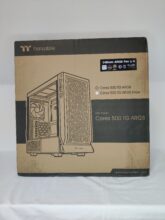

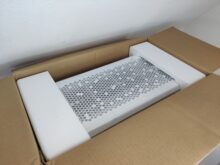
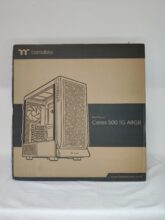
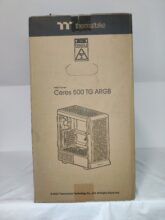
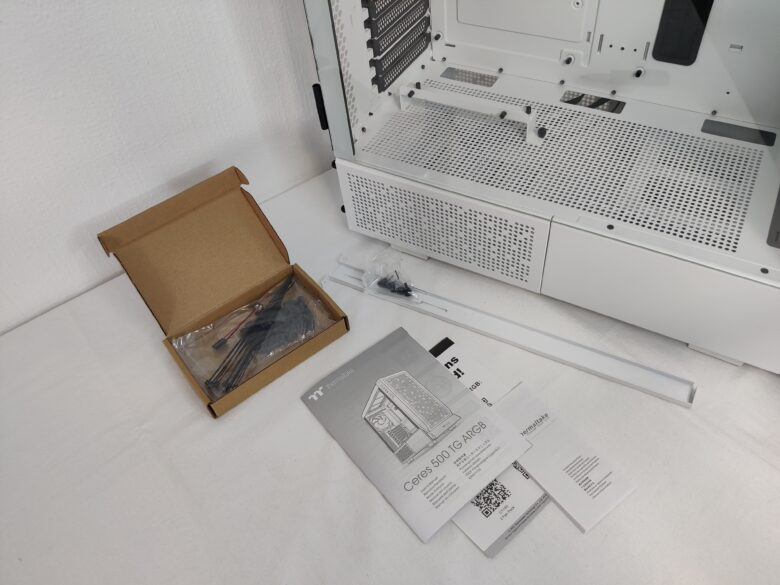
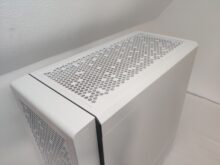
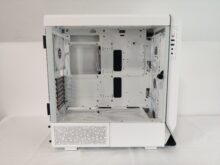
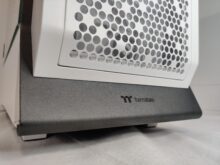
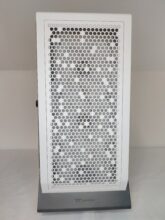
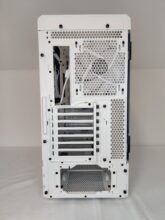
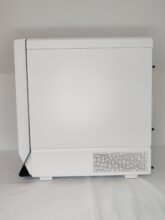

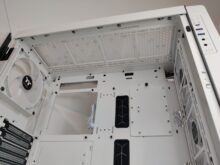
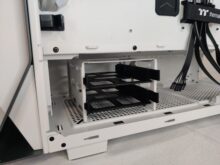

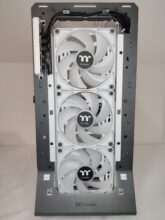
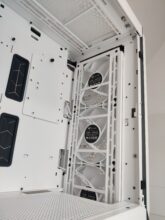
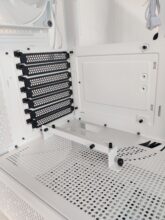
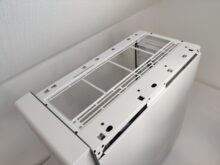
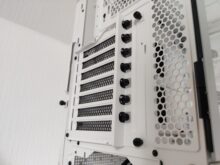
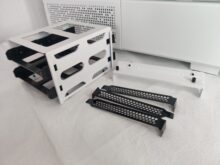
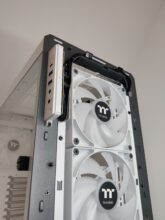
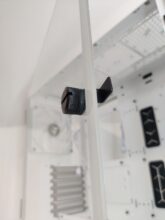
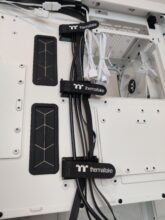
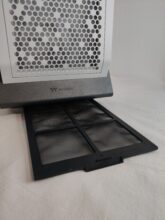



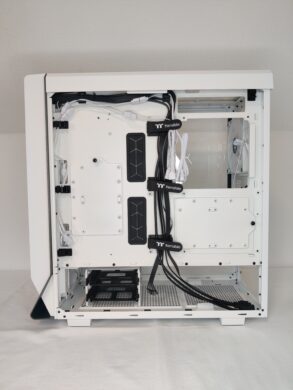
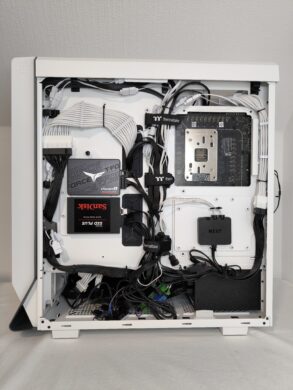
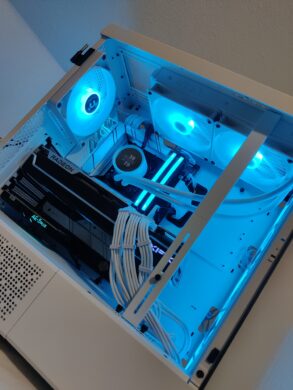
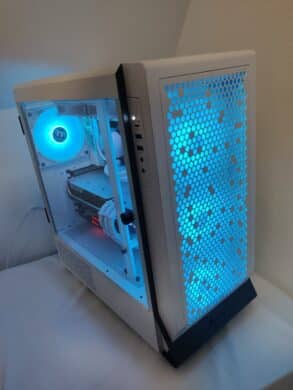
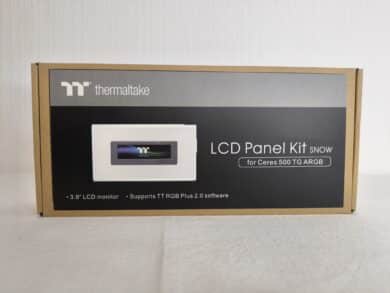
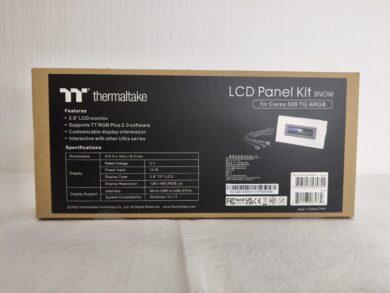

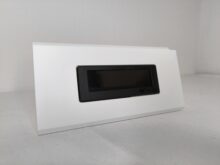

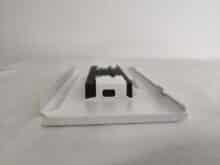
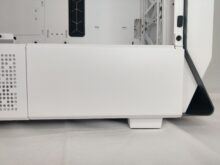

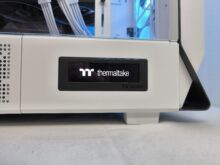
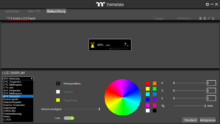
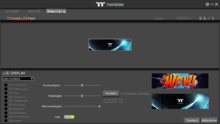

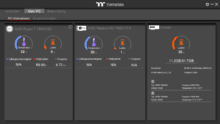
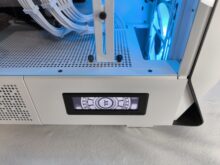
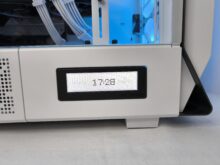
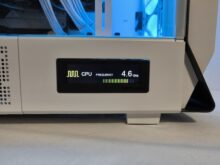
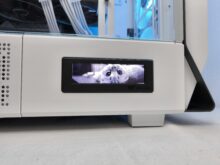
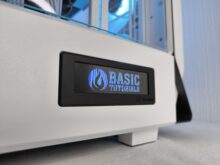
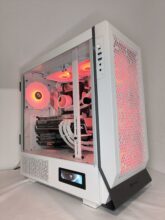
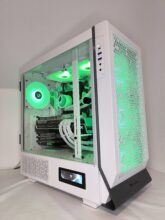


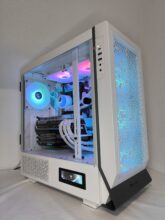

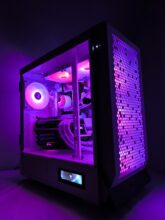
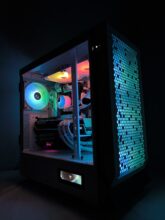
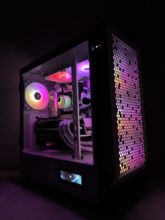
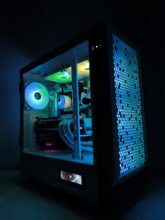

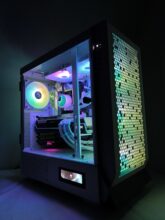
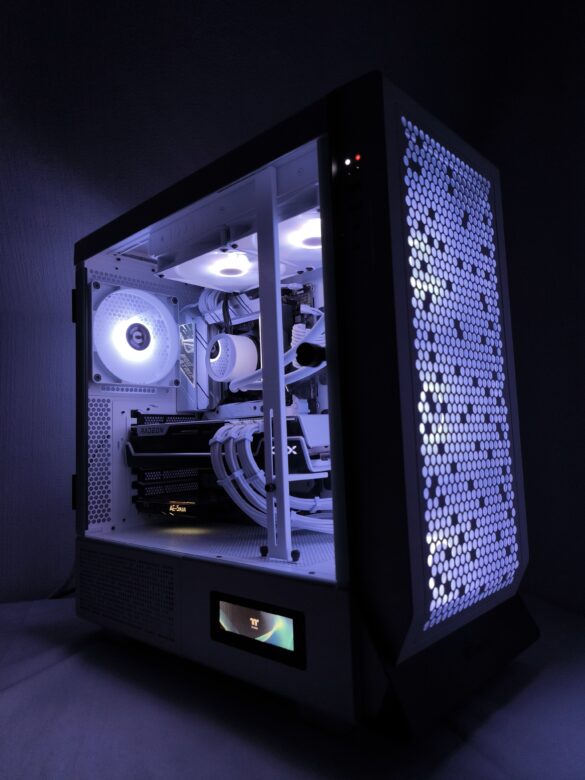


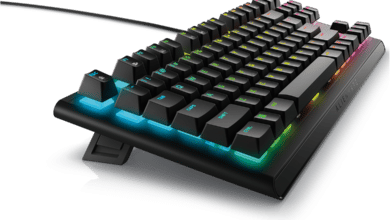


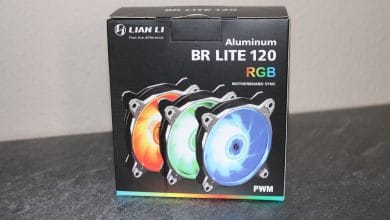
No replies yet
Neue Antworten laden...
Gehört zum Inventar
Beteilige dich an der Diskussion in der Basic Tutorials Community →